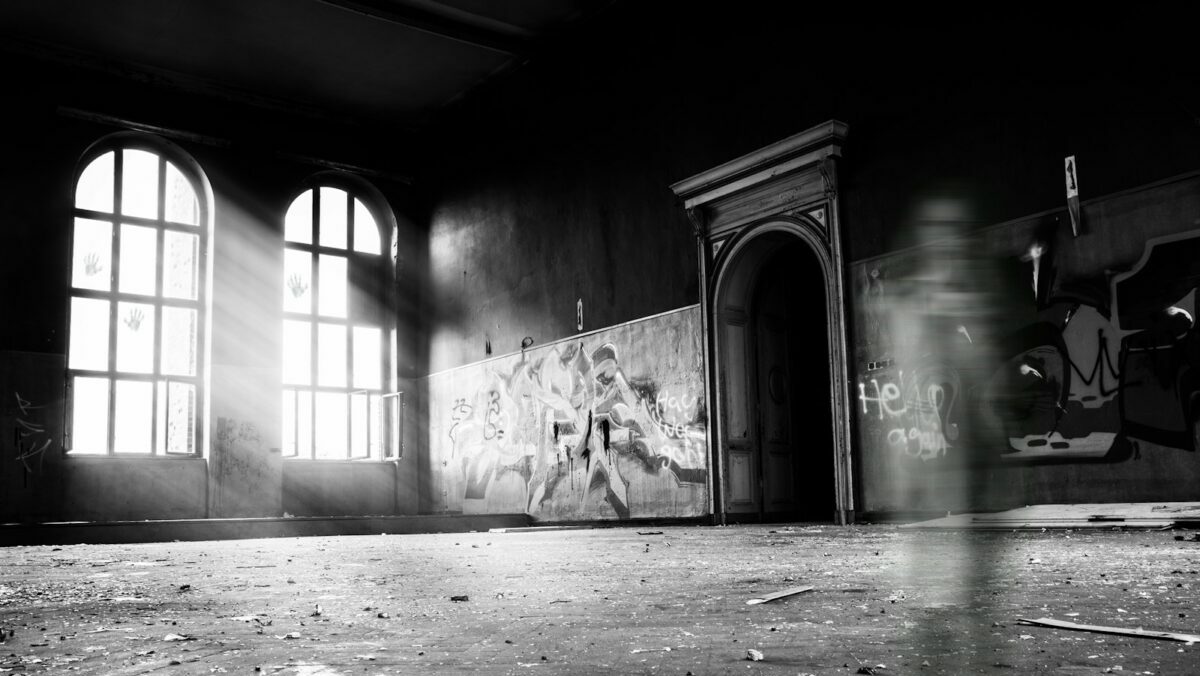
10 spooky places — an adventure for the brave, and not just for Halloween
Some destinations are known for their breathtaking beauty and idyllic landscapes, but there are places that attract travelers with their dark history, mystical atmosphere and eerie legends. On our journey through abandoned prisons, haunted forests and mysterious tombs, we delve deep into some of the most fascinating and spine-chilling locations in the world.
Join us on this extraordinary journey and discover mystical locations that will not only fascinate you, but also give you goosebumps. Find out more about the past of these places, which still fascinate people from all over the world today.
Isla de las Muñecas — The island of the dolls
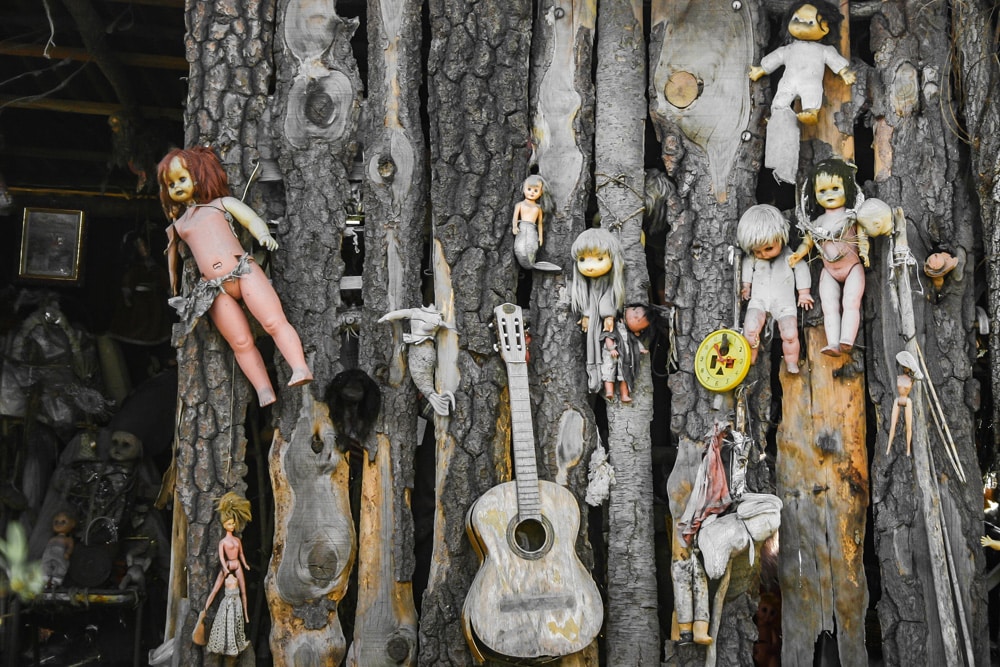
In the middle of the Xochimilco canal network, south of Mexico City, lies a place that gives even the most hardened adventurers goosebumps: the Isla de las Muñecas — the Island of the Dolls. This small, secluded island is world-famous for its eerie collection of hundreds of weathered dolls hanging from the trees and strangely watching visitors.
The history of this island begins in the 1950s with a man named Don Julián Santana Barrera, who settled here as a hermit. Legend has it that one day he discovered the body of a drowned girl in the canals. Shortly after the incident, he found a doll floating in the water and hung it from a tree to appease the girl’s spirit. But that was just the beginning. From then on, he collected more and more dolls, often badly damaged or incomplete, which he found nearby or received from residents. He believed that the ghosts haunted him and that the dolls would protect him. Today, dolls hang all over the island – with torn limbs, weathered faces and empty, expressionless eyes.
A visit to the Isla de las Muñecas is a unique experience that is both fascinating and creepy at the same time. The morbid atmosphere, enhanced by the tropical climate and dense vegetation, makes the dolls appear to be alive. They seem to move, especially when the wind blows, which gives the island an additional eerie touch.
To visit the Isla de las Muñecas, head to Xochimilco, a UNESCO World Heritage Site and one of the most popular excursion destinations in Mexico City. From there, you can hire a traditional trajinera boat to take you through the labyrinth of canals to the island. The boat trip itself is an experience — past floating gardens, traditional Mexican music and perhaps even local markets floating on the water. It takes around two hours to reach the island, which allows you plenty of time to enjoy the impressive surroundings.
Ad
Danvers State Hospital — The abandoned psychiatric ward of Danvers, Massachusetts
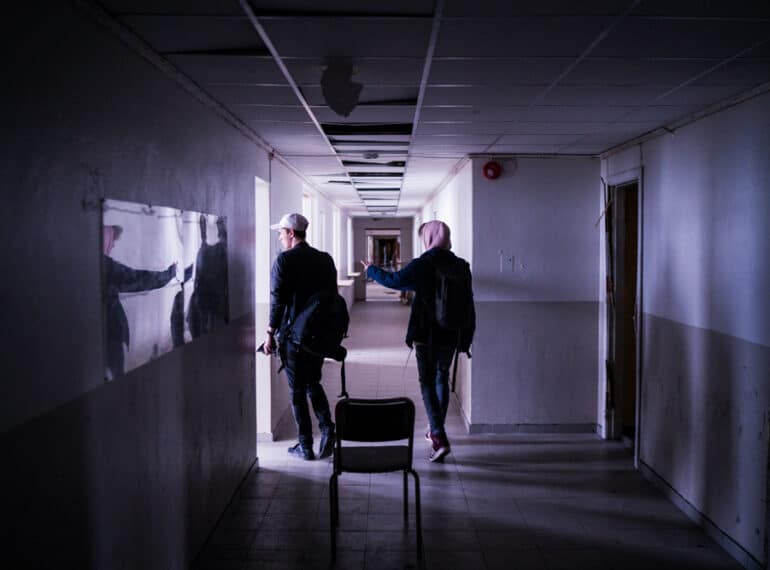
Danvers State Hospital in Massachusetts is an absolute must on your travel list. This former psychiatric hospital, often described as one of the creepiest buildings in the USA, offers you a fascinating insight into the dark history of psychiatry and medicine.
Opened in 1878, Danvers State Hospital was considered one of the largest and most advanced institutions of its time. It was used to treat people with mental illness and was built according to the principles of Kirkbride architecture, known for its labyrinthine corridors and massive Gothic buildings. Many of the patients treated here suffered from severe mental disorders, and the treatment methods were often brutal. Electric shock therapy, lobotomies, and other invasive procedures were commonplace.
The facility was originally designed for around 600 patients, but the hospital was soon massively overcrowded, with up to 2,500 patients in the 1940s. This overcrowding led to neglect, abuse and ultimately a frightening reputation, which the facility retained until its closure in 1992.
Danvers is also known as the birthplace of the lobotomy, a controversial and later heavily criticized treatment method. The myth and legends surrounding Danvers State Hospital have inspired numerous horror films, books, and even video games. For example, it served as the model for the fictional Arkham Sanatorium in the “Batman” universe and the setting of the film Session 9 (2001).
The ruins of Danvers State Hospital hold an eerie fascination for adventurers, history buffs and fans of the paranormal. Although many parts of the original building complex have been demolished over the years, some remains exist that retain the spooky atmosphere of the place. Many visitors report an oppressive mood, unusual noises and a sense of unease that can be felt in the long, empty corridors.
In addition to its dark history, the imposing architecture of the remaining main building attracts photographers and explorers alike. The Victorian Gothic style with its towers, arches, and crumbling facades conveys an overwhelming impression of past grandeur and darkness. If you dare to explore this abandoned place, you will not only have the opportunity to take extraordinary photos, but also gain an insight into the eerie past of this place.
A large part of the original building was demolished in 2006 to make way for a new residential project. However, the central part of the building, including the impressive facades, was preserved and serves as a memorial to the past. Today, the site is partially open to the public, but most of the ruins are not officially accessible. However, many adventurers report unofficial exploratory tours through the remains of the psychiatric hospital, even though it is not legal to enter the grounds.
Danvers State Hospital is located in the town of Danvers, around 30 kilometers north of Boston. You can easily reach the site by car from the city. Many tour groups offer guided tours through the history of the area, although entering the remaining ruins is often prohibited. For the adventurous, however, there are often opportunities to take a closer look at the site, as long as you abide by local regulations.
Ad
The catacombs of Paris – A mysterious look into the city’s underworld
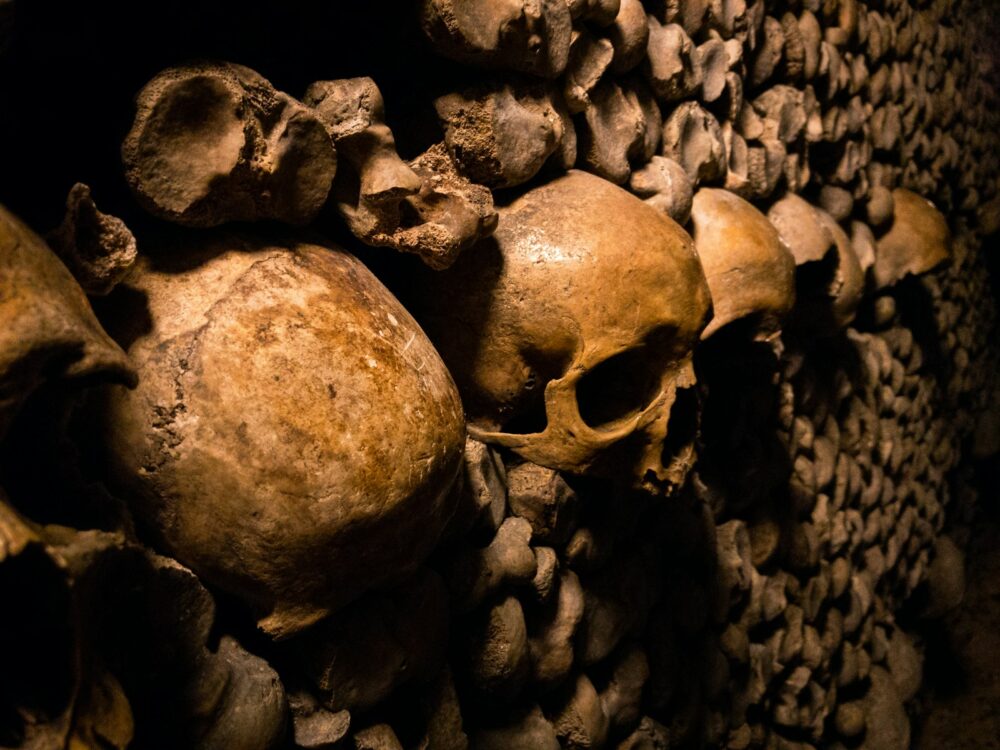
Beneath the bustling streets of Paris, one of the most visited and romantic cities in the world, lies a dark, labyrinthine network: the Paris Catacombs. These vast underground tunnels and chambers house the remains of over six million people and offer an impressive yet eerie alternative to the classic Parisian sights.
The catacombs, also known as Les Catacombes de Paris, were created in the late 18th century as a solution to the city’s overcrowded cemeteries. At the time, the rapid increase in population led to a crisis in dealing with the dead, and many cemeteries were so overcrowded that they posed a threat to the health of the population. The Parisian authorities therefore decided to move the remains from the cemeteries to the disused quarries beneath the city.
From 1786 until the 19th century, the mortal remains of millions of people were reburied in the underground tunnels, which were originally used for mining limestone. The bones were piled up in meticulous patterns, giving the catacombs their unique and eerie character today.
The catacombs of Paris are a fascinating and spooky destination that will immerse you in the history of the city. As you descend into the underground tunnels, you will immediately be captivated by the cool, damp atmosphere and eerie silence. The dense walls of human bones and skulls, artfully stacked, make the catacombs look like a bizarre, macabre art installation.
For fans of dark and unusual places, the catacombs offer a perfect mix of history and horror. During the tour, you will learn more about the turbulent past of Paris, life and death in the city and the challenges that the inhabitants of the time had to overcome. The walk through the underground realm of the dead is a unique experience that lets you discover a whole new, mysterious side to the city.
The catacombs are open to visitors, but with a limited number of tickets per day to protect the delicate atmosphere. The entrance is located in the 14th arrondissement, near the Denfert-Rochereau metro station. After descending 130 steps, you enter a world of bones and tunnels that stretches for several kilometers. The tour takes around 45 minutes to an hour and takes you through some of the most impressive sections of the entire network.
During the tour, you will also gain an insight into the history of the Paris quarries and the origins of the underground network, which served not only as a resting place but also as a hiding place during wars and uprisings.
Anzeige
Bran Castle — On the trail of Dracula in Romania
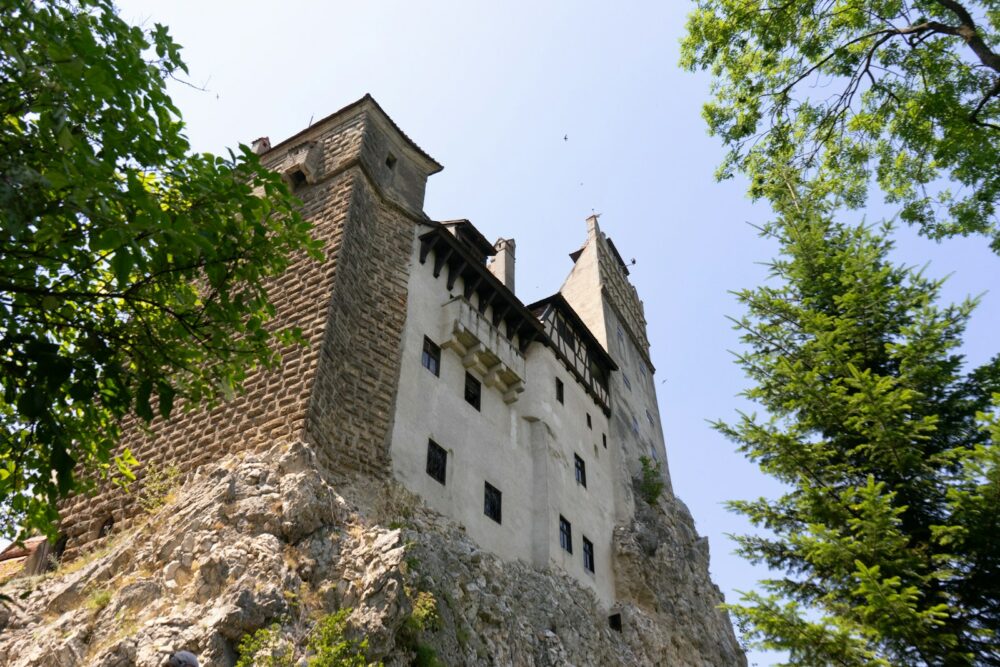
The impressive Bran Castle stands in the middle of the picturesque landscape of Transylvania. The castle, which stands proudly on a steep rock above the village of Bran, is world-famous as the supposed home of Count Dracula, the fictional character from Bram Stoker’s novel of the same name. Although the castle has no direct historical links to Vlad the Impaler (the historical model for Dracula), it attracts thousands of visitors every year searching for vampire legends and gruesome history.
Bran Castle was built in 1377 and originally served as a fortress to defend the border between Transylvania and Wallachia. Due to its strategic location, it has had an important military function over the centuries. It played a role in the defense against Ottoman invasions and served as an important trading base.
Despite its intimidating architecture and grim reputation, there is little historical evidence that Vlad the Impaler, the Prince of Wallachia, ever set foot in the castle. Nevertheless, Bran Castle is often associated with him, making it a magnet for all those interested in the legend of Dracula and the dark tales of Transylvania.
Bran Castle is an impressive destination not only because of its connection to Dracula, but also because of its breathtaking architecture and fascinating history. Upon entering the castle, you are immediately transported into a medieval atmosphere: narrow, winding corridors, steep staircases and numerous towers invite you to discover the secrets of this ancient building.
Inside the castle is a museum that sheds light on the history of the building as well as life and culture in Transylvania. Visitors can wander through the old royal chambers and marvel at the magnificent furniture, paintings, and artifacts from centuries past. A highlight of the museum is the exhibition dedicated to the legend of Dracula and Vlad the Impaler, which is particularly exciting for fans of vampire stories.
From the towers of the castle, you have a fantastic view of the surrounding region. The vast forests and the Transylvanian hills reinforce the feeling that you are in a classic gothic novel. Especially in the autumn and winter months, when fog and clouds envelop the castle, the atmosphere becomes almost mystical.
Bran Castle is located around 30 kilometers from the town of Brașov, a charming town in the heart of Transylvania that is an excellent starting point for excursions. The best way to reach Bran Castle from Brașov is by car or on one of the many tour buses that are offered daily. The journey takes you through the breathtaking landscape of the Carpathian Mountains and takes around 40 minutes.
If you are in Bucharest, the capital of Romania, you can also easily take a day trip to Bran Castle. There are numerous guided tours that combine a visit to Bran Castle with other sights such as Râșnov Castle or the medieval town of Brașov.
Ad
Glamis Castle — The mysterious castle in the Scottish Highlands
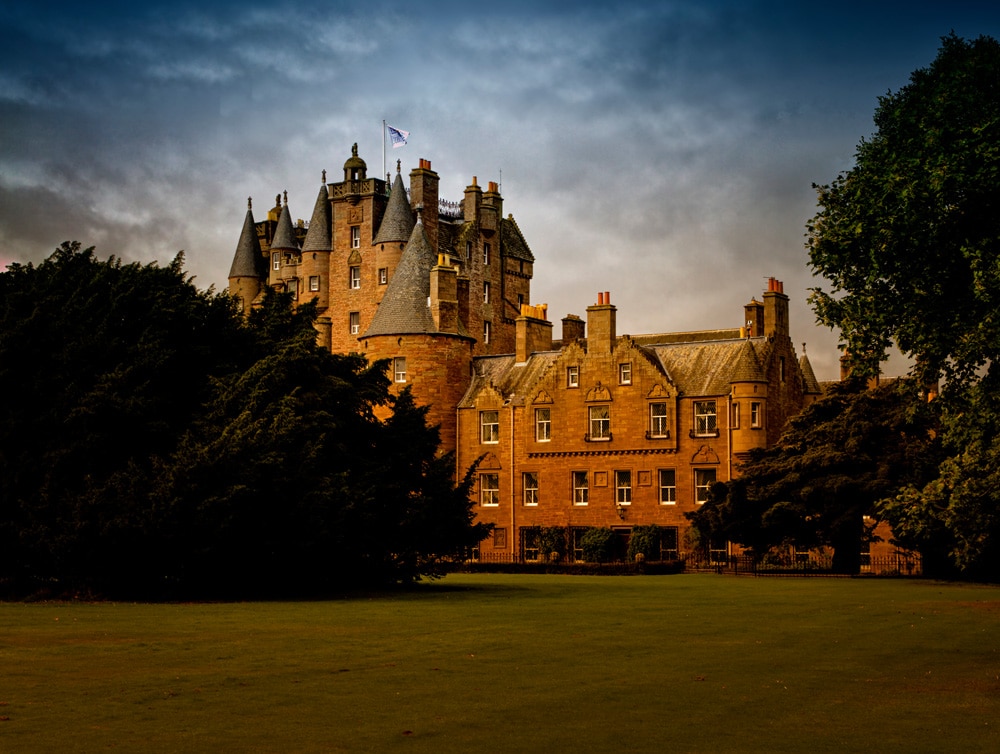
In the heart of the Scottish Highlands stands the imposing Glamis Castle, a castle that not only boasts impressive architecture, but also a rich history and a wealth of myths and legends. Glamis Castle is known as one of the most mystical and best-preserved aristocratic residences in Scotland. It has been the home of the Bowes-Lyon family, the ancestors of Queen Elizabeth, the Queen Mother, for centuries and was also made world-famous by William Shakespeare’s “Macbeth”.
The castle, which is located in the Angus region, was built in the 14th century and has witnessed many important events throughout its history. Glamis Castle was originally the seat of Scottish kings, including King Malcolm II, who died here in 1034. Over the centuries, it became the residence of the Earls of Strathmore and Kinghorne and is still owned by the family today.
A special royal moment was the birth of Princess Margaret, the younger sister of Queen Elizabeth II, who was born at Glamis Castle in 1930.
Glamis Castle offers a perfect blend of history, art, architecture and spooky legends. Upon entering the castle, you are immediately transported back to Scotland’s past. The magnificent interiors, decorated with period furniture, work of art and elegant carpets, bear witness to centuries of royal and aristocratic history.
Visitors have the opportunity to explore the castle and its extensive gardens on a guided tour. The tours offer a fascinating insight into the life of the royal family and the history of the castle. The many legends associated with the castle are particularly fascinating. One of the most famous stories is that of Macbeth, who appears in Shakespeare’s drama as Thane of Glamis. Although there is no historical evidence that Macbeth was ever in Glamis, this connection reinforces the castle’s mystical reputation.
Glamis Castle is also well-known for its ghost stories and attracts many visitors who want to experience the paranormal. One of the most famous legends is that of the so-called Monster of Glamis. It is claimed that a deformed child from the Bowes-Lyon family was born in the castle and kept hidden to preserve the family’s honor. This mysterious “monster” is said to have lived in a hidden room in the castle, which has still not been found.
Another famous ghost is the Gray Lady of Glamis, who is associated with the tragic story of Lady Janet Douglas. She was accused of witchcraft in 1537 and burned at the stake. Her ghost has been said to roam the castle ever since.
The Earl Beardie, an angry ghost of a nobleman who is said to have committed his soul to the devil after losing a game of cards in the 15th century, is also repeatedly spotted in the halls of the castle. It is said that he still plays cards with the devil in one of the castle’s hidden rooms.
Glamis Castle is around 20 minutes by car from the city of Dundee and around 90 minutes from Edinburgh, making it a perfect day trip destination. It is possible to get there by car or by public transport. There are regular bus services from Dundee to Glamis.
Ad
Poveglia — The cursed island of Italy
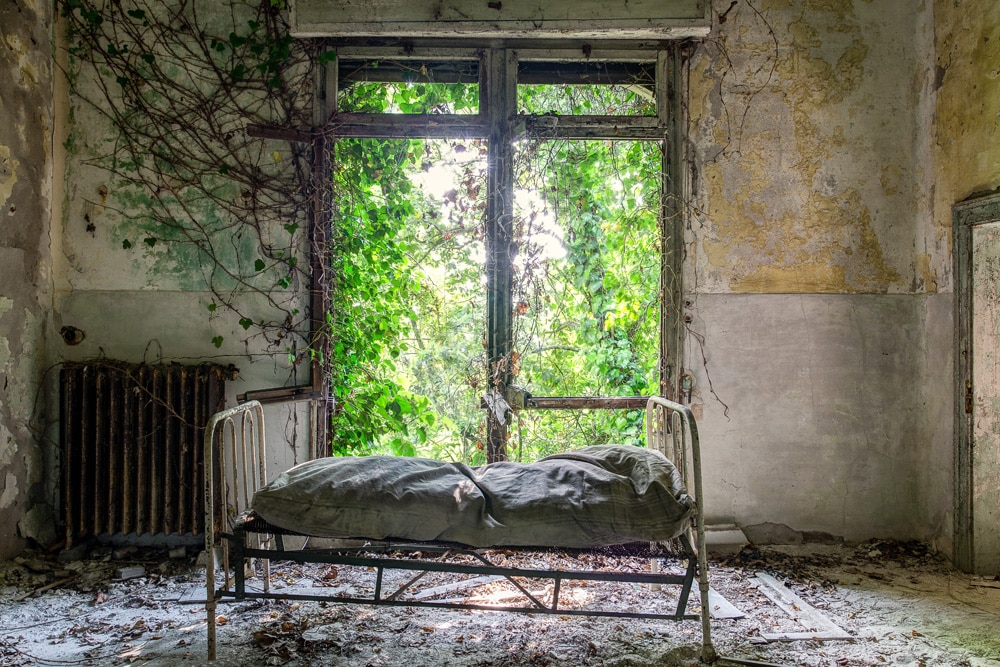
Just a short boat ride away from the romantic lagoon city of Venice lies an island that is associated far less with romance and far more with horror and legends: Poveglia. This small, deserted island has been the scene of dark events for centuries and is now considered one of the world’s most sinister places. For brave travelers seeking the paranormal and the mysterious, Poveglia is a captivating and spine-chilling destination.
The history of the island dates back to the time of the Roman Empire, when Poveglia served as a refuge for people fleeing invasions by barbarian peoples. In the 14th century, however, history took a dark turn: During the devastating plague epidemics, Poveglia became a quarantine site for infected people. Thousands of plague victims were brought here and died on the island. It is believed that the bodies of the dead were buried in mass graves, and a significant part of the island’s soil is made up of human ashes.
In the 18th century, Venice once again used Poveglia as a quarantine site to contain the spread of the plague. Thousands more people who fell ill with the plague met a tragic end on the island. This gruesome story gave Poveglia the reputation of a “cursed island”.
However, the dark past did not end here. In the early 20th century, a psychiatric clinic was opened on Poveglia. The stories surrounding this institution are just as gruesome as those of the plague era. According to reports, a doctor carried out cruel experiments on the patients and claimed that they could see ghosts and visions. Allegedly, the doctor eventually went insane and threw himself off the clinic’s bell tower. Since then, his ghost — along with the spirits of the plague victims — is said to haunt the island.
Poveglia is undoubtedly not a typical tourist destination. The island, which is officially closed to the public, nevertheless attracts adventurers, history buffs and paranormal enthusiasts who are fascinated by the eerie legends. Those who yearn for dark stories and abandoned architecture will get their money’s worth here.
The abandoned buildings on the island are now ruins that are being reclaimed by nature. The old bell tower that towers over the island still stands, and its silhouette adds to the island’s eerie atmosphere. Visitors report an almost overwhelming silence, broken only by the sounds of birds and the wind. For many, the feeling of isolation and the knowledge of the terrible events that took place here is enough to give them unforgettable goosebumps.
The stories about the ghosts of Poveglia are numerous and vary depending on the source. Many believe that the souls of plague victims and patients of the psychiatric hospital are trapped on the island and haunt it. Visitors and even fishermen approaching the island report eerie noises, voices in the wind and unexplained apparitions. The island is considered one of the “most haunted places in the world” and is often mentioned in paranormal investigations and TV shows.
Poveglia is located in the Venetian lagoon, about half an hour by boat from Venice. Officially, the island is closed to the public, but there are reports that it is possible to organize private boats or tours to visit the island. However, it is strongly recommended to respect local laws and ensure that access is permitted before a planned trip.
Some tour operators offer special “ghost tours” where you can visit the spookiest places in the Venetian lagoon without setting foot on the island. These tours tell the dark history of Poveglia while you marvel at the island from the water.
Ad
Sedletz-Ossarium — The Bone Church of the Czech Republic
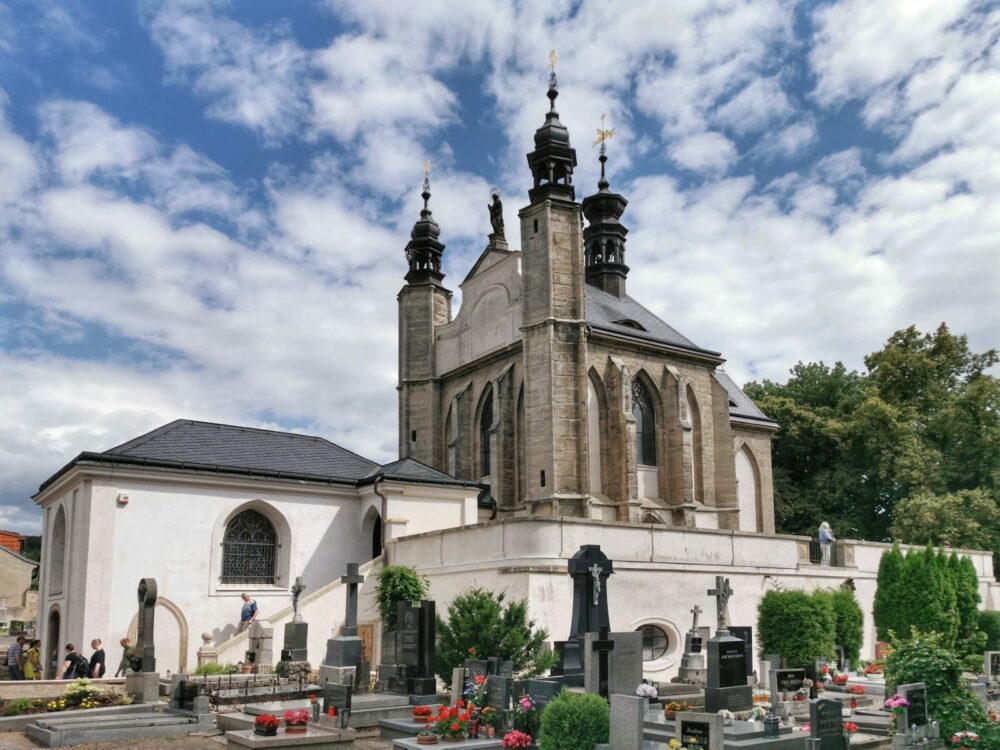
About an hour from Prague, in the small town of Kutná Hora, lies one of the most fascinating and, at the same time, most gruesome sights in the world: the Sedletz Ossuary, also known as the Bone Church. This extraordinary building attracts thousands of visitors every year who are fascinated by the dark beauty and macabre artistry of the church. The Sedletz Ossuary is not just a religious site, but a unique work of art that impressively displays the bones of an estimated 40,000 to 70,000 people.
The history of the Sedletz Ossarium begins in 1278, when the abbot of the Cistercian monastery of Sedlec was sent to Jerusalem. On his return, he brought with him a handful of earth from the hill of Golgotha, which he scattered over the monastery’s cemetery. This act made the cemetery a sought-after burial place, and soon people from all over Europe wanted to be buried in Sedlec. Especially during the plague epidemic in the 14th century and the Hussite wars in the 15th century, the number of burials increased rapidly, resulting in an overcrowded cemetery.
In the 16th century, it was decided to place the remains of the dead in an ossuary. In 1870, the Bohemian woodcarver František Rint was commissioned to transform the human bones into an artistic decoration for the chapel. The result is a gruesome but fascinating masterpiece that still amazes visitors today.
The Sedletz Ossuary is no ordinary ossuary — it is a truly unique place that combines the macabre side of history with artistic design. When you enter the chapel, you are immediately struck by the dark atmosphere and the surreal beauty of the arrangement of the bones. Skulls and bones are stacked in elaborate patterns along the walls, chandeliers made of human bones hang from the ceiling, and even the Schwarzenberg family crest is made of bones.
The highlight of the ossarium is undoubtedly the chandelier, which contains almost all the bones of the human body and is enthroned in the center of the chapel. The perfection and attention to detail of these works make the Sedletz Ossarium a place where art, religion and the morbid come together uniquely.
For those interested in history and art, the Ossarium offers a profound insight into the medieval approach to death and the belief in the afterlife. The church itself is a place of worship, and the artistic arrangement of the bones not only serves aesthetic purposes, but is also a reminder of the transience of life.
The Sedletz Ossarium is located about an hour’s drive from Prague. You can easily reach Kutná Hora by train or bus from Prague. It is only a 15-minute walk from the train station in Kutná Hora to the ossuary.
Ad
Aokigahara Forest — Japan’s mysterious “suicide forest”
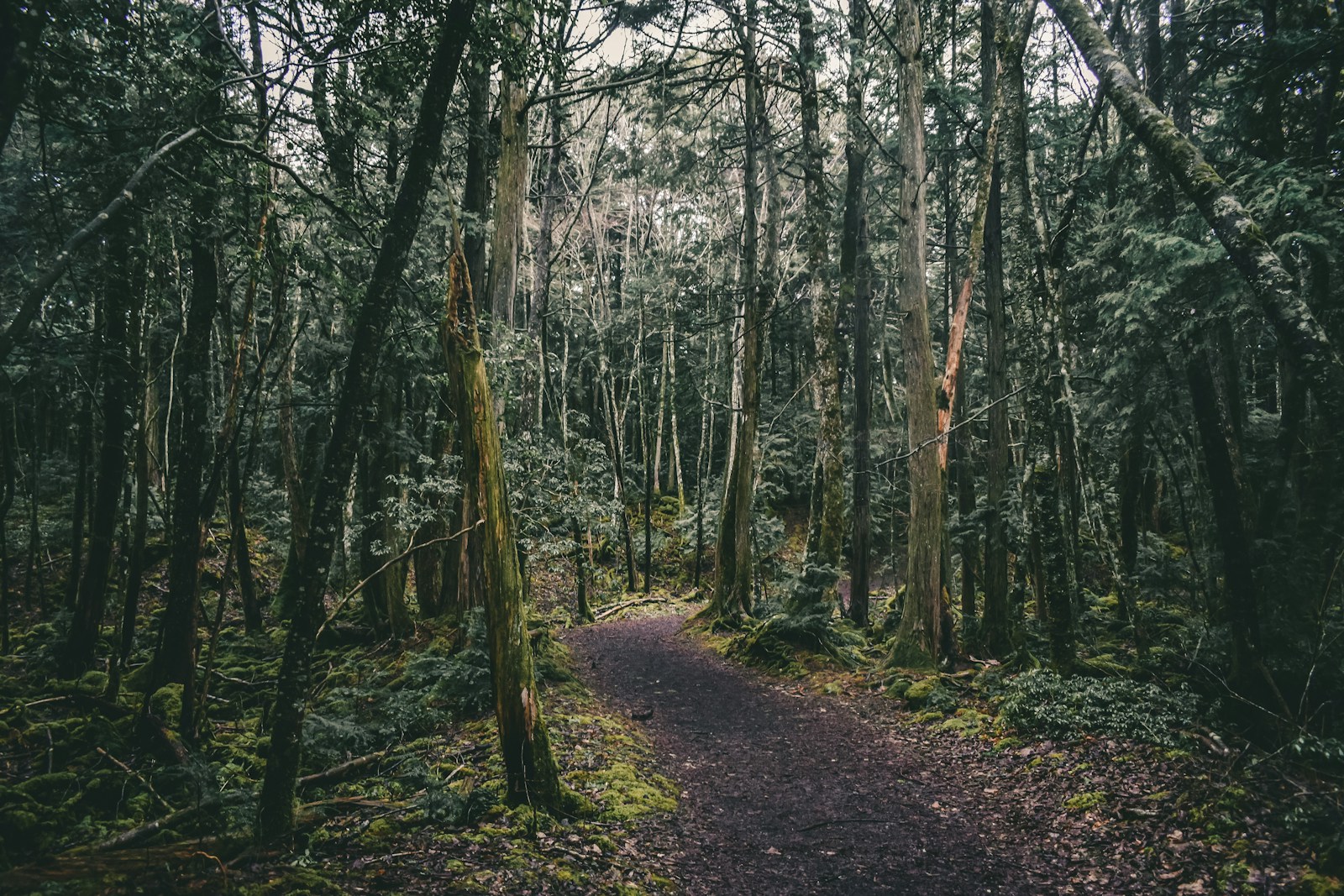
Beneath majestic Mount Fuji lies a dense, almost impenetrable forest that has attracted worldwide attention for its beauty and dark history: the Aokigahara Forest, also known as the “Suicide Forest”. This tranquil but eerie forest landscape attracts visitors from all over the world who are keen to explore the mystical atmosphere and natural beauty, but are also fascinated by the dark legends and stories that surround this place.
The Aokigahara Forest, also known as Jukai (“sea of trees” in Japanese), covers an area of around 35 square kilometers and is located on the northwest slope of Mount Fuji. The dense forest floor, which consists largely of cooled lava, and the dense trees make it easy to get lost in this forest. In Japanese culture, Aokigahara has been a place of mystical significance for centuries. Even in ancient times, the forest is said to have been associated with ubasute — a cruel practice in which sick or old people were taken to the forest and left to their fate.
In modern times, the Aokigahara Forest has become tragically famous. It is often referred to as the “suicide forest”, as it has been known as the scene of many suicides since the 1950s. Every year it attracts people who want to end their lives there, which has made the forest a symbolic place for suicide in Japan. Signs near the trails appeal to people to seek help, and local authorities regularly patrol to rescue potential victims.
Despite its dark history, the Aokigahara Forest is also a fascinating destination because of its breathtaking nature. The dense forest is so quiet that you can often only hear the rustling of the leaves and the creaking of the trees, as the volcanic soil muffles the sound. For nature lovers, the Aokigahara forest offers a unique landscape that is both mystical and calming.
Visitors can explore well-marked hiking trails and enjoy the unusual vegetation and mysterious atmosphere of the forest. The numerous caves located in the forest are particularly fascinating. Two of the most famous are the Narusawa Ice Cave and the Fugaku Wind Cave, which offer an exciting change to the forest landscape with their impressive geological formations and year-round ice. These caves are a popular destination for adventurers and geologists who are eager to explore the volcanic history of the region.
The Aokigahara Forest is not only a place of natural beauty, but is also associated with a multitude of ghost stories and mystical legends. In Japanese folklore, there are accounts of Yūrei, the spirits of the deceased, wandering the forest and never coming to rest. Many believe that the spirits of those who have committed suicide in the forest linger there and haunt the place. These stories have made Aokigahara one of the most eerie places in Japan.
Films, books, and documentaries have further reinforced the forest’s reputation as a “cursed place”. One of the best-known novels is “Nami no Tō” by Seichō Matsumoto, which was published in the 1960s and deals with suicide in Aokigahara. Western pop culture has also taken up the forest, for example in the 2016 film “The Forest”, which further cemented Aokigahara’s spooky reputation for an international audience.
Aokigahara Forest is located around two hours from Tokyo and is easily accessible by train and bus. The best way to travel from Tokyo is by train to Kawaguchiko Station and from there takes a bus to the entrance of the forest. The forest’s proximity to Mount Fuji makes it a popular destination for day trips.
The witches’ mounds of Blaubeuren — mysterious burial mounds in the Swabian Alb
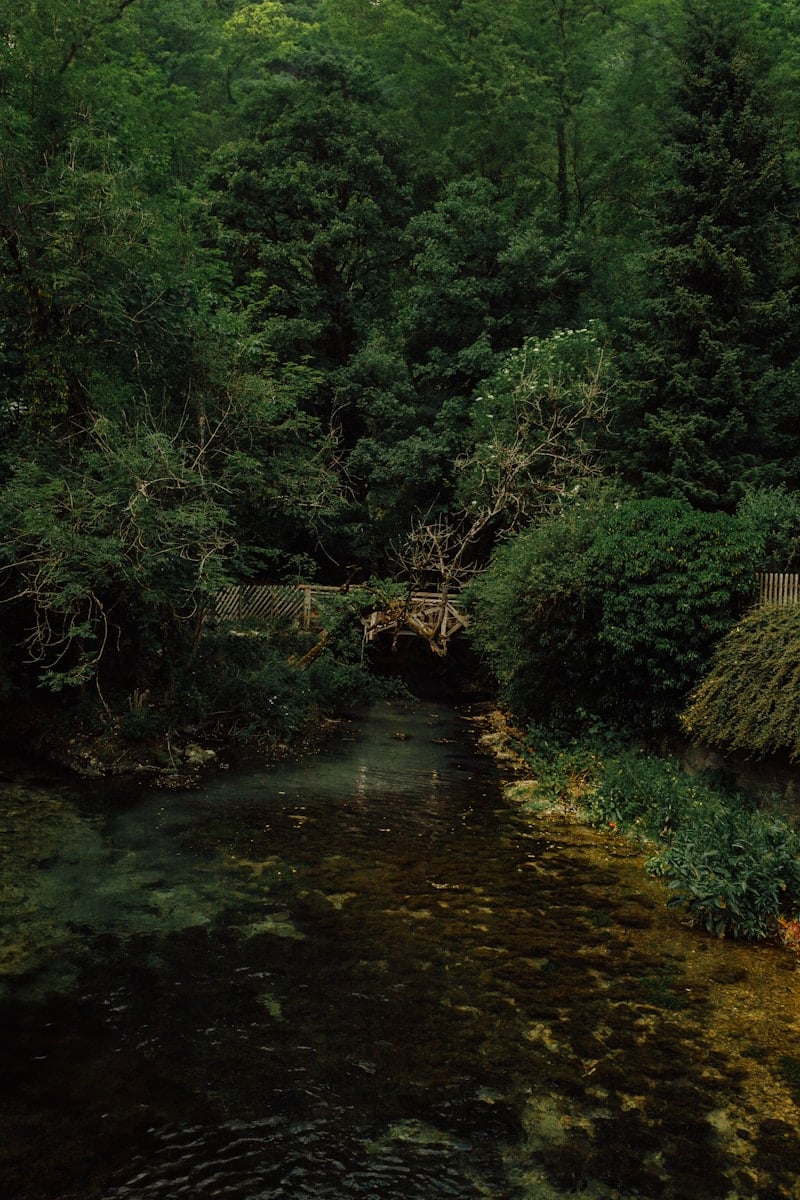
Hidden in the woods around the picturesque town of Blaubeuren in the Swabian Alb is a place that fascinates both history buffs and lovers of mystical stories: the witches’ mounds. These mysterious, grass-covered burial mounds have been the scene of legends and tales about witches and supernatural powers for centuries. For visitors with a passion for nature, history and the mysterious, the witches’ mounds offer a fascinating and atmospheric journey into the past.
The Hexenhügel are actually a collection of burial mounds dating back to the Hallstatt period (approx. 800 to 450 BC). These Celtic burial mounds were used as burial sites by the region’s early settlers. Over the centuries, however, people lost sight of the exact purpose of these mounds and numerous legends developed, adding to the mysterious atmosphere of the place.
In popular belief, the burial mounds were later referred to as meeting places for witches, who are said to have held their rituals and gatherings here. Witches are said to have danced around the mounds on Walpurgis nights in particular. These tales gave the place its name and made it a mysterious destination for all those interested in the dark and mystical side of the region.
The witches’ hills of Blaubeuren offer an extraordinary mixture of nature experience and historical significance. Hikers and nature lovers can explore the hills on well-signposted hiking trails that lead through dense forests and past idyllic clearings. Especially in the early hours of the morning or at dusk, the place unfolds an almost magical atmosphere when wafts of mist drift through the trees and the hills seem to be enveloped by a ghostly hand.
For history buffs, the witches’ mounds are an exciting place to learn more about the early settlement of the Swabian Alb and Celtic culture. Display boards along the paths provide insights into the archaeological finds made in the region and explain the significance of the burial mounds as evidence of prehistory.
Mysticism fans, on the other hand, will be fascinated by the many legends and tales surrounding the witches’ mounds. Whether you believe in witches, ghosts and supernatural phenomena or not, the stories surrounding this place give it a special aura. It is said that eerie apparitions have been observed, especially on Walpurgis Night or during the full moon.
Blaubeuren is located around 20 kilometers west of Ulm and is easily accessible both by car and by public transport. The Blaubeuren train station is regularly served by trains from Ulm and Stuttgart.
Eastern State Penitentiary — The eerie prison of Philadelphia

With its imposing Gothic walls and labyrinthine corridors, the Eastern State Penitentiary in Philadelphia is considered one of the most fascinating yet creepy historic prisons in the world. Once the most modern prison in the US, it is now an abandoned place that attracts visitors with its dark past, unique architectural features and reports of paranormal activity. For travelers interested in history, dark tourism destinations or the paranormal, a visit to Eastern State Penitentiary is an absolute must.
Opened in 1829, Eastern State Penitentiary was a revolutionary prison that would change the American penal system forever. It was one of the first prisons to introduce the concept of solitary confinement, in the belief that isolation and silence would bring inmates to repentance and “reform” them. This method of incarceration became known as the “Pennsylvania System” and served as a model for many other prisons around the world.
The prison housed some of the most notorious criminals in the USA, including Al Capone, who was imprisoned here for a time in a luxuriously furnished cell. Despite the original intention to rehabilitate the inmates, the extreme isolation often led to mental health problems and eventually brought the prison into disrepute.
After almost 150 years of operation, the Eastern State Penitentiary was finally closed in 1971. Since then, most areas of the prison have fallen into disrepair, adding to the spooky atmosphere that surrounds the place.
A visit to Eastern State Penitentiary is a journey into the dark history of criminal justice. Now a museum and historical site, the prison is open to visitors who want to explore the barren cells, endless corridors and deserted common rooms. The dilapidated, overgrown walls and crumbling cells create an impressive, almost eerie atmosphere that gives visitors an awe-inspiring insight into the lives of the prisoners.
Particularly fascinating is Al Capone’s cell, which, in contrast to the bare cells of the other inmates, was luxuriously furnished with furniture, carpets, and a radio. This well-preserved cell is a highlight of the tour and shows that even in a prison, the reputation, and standing of a criminal could have an influence.
The prison features numerous interactive exhibits, including “The Big Graph,” which visualizes the history of incarceration in the U.S. and the growing prison population over the years. There are also special audio tours where well-known personalities such as actor Steve Buscemi lead the narration, bringing the stories of inmates and guards back to life.
Eastern State Penitentiary is also known as one of the most haunted places in the US. Visitors and staff have published reports of strange apparitions, footsteps in empty corridors and cold touches in the cells over the years. These reports have made the prison a popular destination for paranormal investigators and ghost hunters.
Cell block 12, where many of the ghost sightings have been reported, is particularly notorious. There are reports of shadowy figures flitting through the corridors and eerie noises that seem to come from the empty cells. For those brave enough, Eastern State Penitentiary offers special “Terror Behind the Walls” tours — a spooky experience, especially during the Halloween season.
Eastern State Penitentiary is located in the center of Philadelphia, about a 10-minute drive from downtown. It’s open year-round, but the most popular times to visit are during the Halloween season, when the prison is transformed into an interactive haunted house experience.
Anzeige
Note: Links marked with an asterisk (*) or “Ad” are so-called affiliate links. As an Amazon partner, we earn from qualified sales. The same applies to other partners. This means that we receive a small commission on purchases or bookings to finance this site. There are no additional costs for you!




